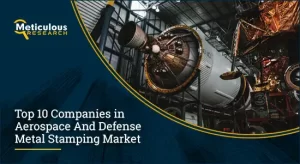Building Your Own Large Language Model LLM from Scratch: A Step-by-Step Guide

Training an LLM from scratch requires substantial computational resources, typically involving multiple GPUs or TPUs and a significant amount of memory and storage. What sets this course apart is its emphasis on practical, real-world applications. It not only demystifies the vast array of tools available but also focuses on the importance of the process over the tools themselves. The course is designed to help you understand the critical elements that contribute to the success or failure of ML in production.
Our data labeling platform provides programmatic quality assurance (QA) capabilities. ML teams can use Kili to define QA rules and automatically validate the annotated data. For example, all annotated product prices in ecommerce datasets must start with a currency symbol. Otherwise, Kili will flag the irregularity and revert the issue to the labelers.
Extrinsic methods evaluate the LLM’s performance on specific tasks, such as problem-solving, reasoning, mathematics, and competitive exams. These methods provide a practical assessment of the LLM’s utility in real-world applications. Recent research, exemplified by OpenChat, has shown that you can achieve remarkable results with dialogue-optimized LLMs using fewer than 1,000 high-quality examples. The emphasis is on pre-training with extensive data and fine-tuning with a limited amount of high-quality data. Beyond the theoretical underpinnings, practical guidelines are emerging to navigate the scaling terrain effectively. These encompass data curation, fine-grained model tuning, and energy-efficient training paradigms.
Using open-source LLMs via API
Our instructors are all battle-tested with field and academic experiences. Their background ranges from primary school teachers, software engineers, Ph.D. educators, and even pilots. All of them have to pass our 4-step recruitment process; from video screening, interview, curriculum-based assessment, to finally a live teaching demo. Such a strict process is to ensure that we only select the top 1.5% of instructors, which makes our learning experience the top in the industry. However, DeepMind debunked OpenAI’s results in 2022, where the former discovered that model size and dataset size are equally important in increasing the LLM’s performance. The ultimate goal of LLM evaluation, is to figure out the optimal hyperparameters to use for your LLM systems.
These components work in concert to enable the model to capture a wide range of linguistic phenomena. Language models are not only pivotal in understanding the structure of language but also in capturing the nuances and contexts within which words are used. As your project evolves, you might consider scaling up your LLM for better performance. This could involve increasing the model’s size, training on a larger dataset, or fine-tuning on domain-specific data. First, we create a Transformer class which will initialize all the instances of component classes. Inside the transformer class, we’ll first define encode function that does all the tasks in encoder part of transformer and generates the encoder output.
A good place to store this information is in the tensor that is produced by the operation. On average, the 7B parameter model would cost roughly $25000 to train from scratch. This clearly shows that training LLM on a single GPU is not possible at all. ”, these LLMs might respond back with an answer “I am doing fine.” rather than completing the sentence.
Dataset preparation is cleaning, transforming, and organizing data to make it ideal for machine learning. It is an essential step in any machine learning project, as the quality of the dataset has a direct impact on the performance of the model. Nowadays, the transformer model is the most common architecture of a large language model. The transformer model processes data by tokenizing the input and conducting mathematical equations to identify relationships between tokens. This allows the computing system to see the pattern a human would notice if given the same query. There are several types of language models, including n-gram models, hidden Markov models, and neural network models.
There is no one-size-fits-all solution, so the more help you can give developers and engineers as they compare LLMs and deploy them, the easier it will be for them to produce accurate results quickly. In my experience, the course is not only informative but also highly enjoyable, particularly for those who love gaming. The PyGame module adds an element of fun to learning Python, making complex concepts more accessible and easier to understand. The course allows you to immediately implement what you learn by building games. The course caters to both beginners and those with some programming experience, offering a solid foundation in Python while also providing a refresher for more experienced learners. This course is perfect for anyone looking to enhance their data analysis skills, whether you’re just starting with Python or seeking to expand your existing knowledge.
However, it may make sense to build an LLM from scratch for some businesses developing their own custom models for security or privacy reasons. In artificial intelligence, large language models (LLMs) have emerged as the driving force behind transformative advancements. The recent public beta release of ChatGPT has ignited a global conversation about the potential and significance of these models. To delve deeper into the realm of LLMs and their implications, we interviewed Martynas Juravičius, an AI and machine learning expert at Oxylabs, a leading provider of web data acquisition solutions. Joining the discussion were Adi Andrei and Ali Chaudhry, members of Oxylabs’ AI advisory board. These models excel at automating tasks that were once time-consuming and labor-intensive.
Step 3: Prepare Dataset and DataLoader
The late 1980s witnessed the emergence of Recurrent Neural Networks (RNNs), designed to capture sequential information in text data. The turning point arrived in 1997 with the introduction of Long Short-Term Memory (LSTM) networks. LSTMs alleviated the challenge of handling extended sentences, laying the groundwork for more profound NLP applications. During this era, attention mechanisms began their ascent in NLP research. In 1967, MIT unveiled Eliza, the pioneer in NLP, designed to comprehend natural language.
An inherent concern in AI, bias refers to systematic, unfair preferences or prejudices that may exist in training datasets. LLMs can inadvertently learn and perpetuate biases present in their training data, leading to discriminatory outputs. Mitigating bias is a critical challenge in the development of fair and ethical LLMs. Understanding the sentiments within textual content is crucial in today’s data-driven world. LLMs have demonstrated remarkable performance in sentiment analysis tasks.
Previously, an organization would have had to develop the components of a transformer on its own, which requires both considerable time and specialized knowledge. Fortunately, today, there are frameworks specifically designed for neural network development that provide these components out of the box – with Pytorch and Tensorflow being two of the most prominent. In this guide, we detail how to build your own LLM from the ground up – from architecture definition and data curation to effective training and evaluation techniques. If you’re an AI researcher, deep learning expert, machine learning professional, or large language model enthusiast, we want to hear from you!
Although this model is small and simplified, it demonstrates the core principles behind GPT architectures and can be scaled up with larger datasets and more layers for better results. In this blog, we’ll go through the process of building a basic Transformer model in Python from scratch, training it on a small text dataset, and implementing text generation using autoregressive decoding. Because Chat GPT fine-tuning will be the primary method that most organizations use to create their own LLMs, the data used to tune is a critical success factor. You can foun additiona information about ai customer service and artificial intelligence and NLP. We clearly see that teams with more experience pre-processing and filtering data produce better LLMs. As everybody knows, clean, high-quality data is key to machine learning. LLMs are very suggestible—if you give them bad data, you’ll get bad results.
Evaluating models based on what they contain and what answers they provide is critical. Remember that generative models are new technologies, and open-sourced models may have important safety considerations that you should evaluate. We work with various stakeholders, including our legal, privacy, and security partners, to evaluate potential risks of commercial and open-sourced models we use, and you should consider doing the same. These considerations around data, performance, and safety inform our options when deciding between training from scratch vs fine-tuning LLMs. Before diving into creating a personal LLM, it’s essential to grasp some foundational concepts. Firstly, an understanding of machine learning basics forms the bedrock upon which all other knowledge is built.
In this post, we’ll go from nothing to an (admittedly very limited) automatic differentiation library that can differentiate arbitrary functions of scalar values. Large Language Models (LLMs) have revolutionized the field of machine learning. They have a wide range of applications, from continuing text to creating dialogue-optimized models. Libraries like TensorFlow and PyTorch have made it easier to build and train these models.
Leverage OpenAI Tool calling: Building a reliable AI Agent from Scratch – Towards Data Science
Leverage OpenAI Tool calling: Building a reliable AI Agent from Scratch.
Posted: Tue, 26 Mar 2024 07:00:00 GMT [source]
This step determines if the LLM is ready for deployment or requires further training. Use previously unseen datasets that reflect real-world scenarios the LLM will encounter for an accurate evaluation. These datasets should differ from those used during training to avoid overfitting and ensure the model captures genuine underlying patterns. However, you want your pre-trained model to capture sentiment analysis in customer reviews. So you collect a dataset that consists of customer reviews, along with their corresponding sentiment labels (positive or negative).
Upon deploying an LLM, constantly monitor it to ensure it conforms to expectations in real-world usage and established benchmarks. If the model exhibits performance issues, such as underfitting or bias, ML teams must refine the model with additional data, training, or hyperparameter tuning. This allows the model remains relevant in evolving real-world circumstances. The banking industry is well-positioned to benefit from applying LLMs in customer-facing and back-end operations. Training the language model with banking policies enables automated virtual assistants to promptly address customers’ banking needs. Likewise, banking staff can extract specific information from the institution’s knowledge base with an LLM-enabled search system.
Connecting this idea with our company’s experience, we effectively utilized the concept of ready-made solutions in the Art of Comms project. Within this project, we are implementing advanced artificial intelligence technologies to automate the process of content review, leveraging the flexibility of the LangChain platform. This platform allows us to integrate seamlessly with various intelligent tools, tailoring the solution to our specific needs without the complexities of building an LLM from scratch. Developing a custom large language model (LLM) from scratch is not always the most rational approach due to its high cost, complexity, and resource demands. Instead, using ready-made solutions like OpenAI’s ChatGPT offers a streamlined path to harnessing advanced AI capabilities without the extensive overhead of developing a model from the ground up.
Below is a comparison diagram between the vanilla transformer and LLaMA. Large language models have become the cornerstones of this rapidly evolving AI world, propelling… The training procedure of the LLMs that continue the building llm from scratch text is termed as pertaining LLMs. These LLMs are trained in a self-supervised learning environment to predict the next word in the text. We’ll use Machine Learning frameworks like TensorFlow or PyTorch to create the model.
For more specialized models, gathering data from niche forums, academic papers, or licensed corpora may be necessary. Many data scientists are eager to leverage their machine learning expertise in the burgeoning field of generative AI, particularly in developing Large Language Models (LLMs). However, for those without a deep background in natural language processing and AI research, the journey can be daunting. The learning curve is steep, and progress can be elusive without the right guidance. Despite these challenges, the ambition to build an LLM from scratch is commendable, as mastering this process significantly simplifies the creation of LLM-based applications. In this article, I will provide a curated list of top-tier learning resources to help you embark on this rewarding endeavor.
Building Domain-Specific LLMs: Examples and Techniques
Open-source models that deliver accurate results and have been well-received by the development community alleviate the need to pre-train your model or reinvent your tech stack. Instead, you may need to spend a little time with the documentation that’s already out there, at which point you will be able to experiment with the model as well as fine-tune it. Production Machine Learning 101 – MLOps/LLMOps is an essential course for anyone looking to master the fundamentals of deploying machine learning models into production. The course covers everything from the basics of MLOps to the intricate processes that ensure successful and optimized production deployments.
- This is especially crucial for sectors with data sensitivity, such as finance, healthcare, the legal profession, and others.
- It’s vital to ensure the domain-specific training data is a fair representation of the diversity of real-world data.
- Such a move was understandable because training a large language model like GPT takes months and costs millions.
- While JavaScript is not traditionally used for heavy machine learning tasks, there are still libraries available, such as TensorFlow, which is perfect for our needs.
To get one, we can create an account on OpenAI, fill in payment details and navigate to the “API keys” tab to generate it. With the API key, we can swiftly authenticate to OpenAI using the OpenAI Authenticator node. To leverage free local models in KNIME, we rely on GPT4All, an open-source initiative that seeks to overcome the data privacy limitations of API-based free models.
What Are The Challenges Of Training LLM?
Their pre-training on diverse internet text enables them to generalize well across topics they were never explicitly programmed to understand. Even though some generated words may not be perfect English, our LLM with just 2 million parameters has shown a basic understanding of the English language. We have used the loss as a metric to assess the performance of the model during training iterations.
HuggingFace integrated the evaluation framework to weigh open-source LLMs created by the community. Considering the evaluation in scenarios of classification or regression challenges, comparing actual tables and predicted labels helps understand how well the model performs. Recently, “OpenChat,” – the latest dialog-optimized large language model inspired by LLaMA-13B, achieved 105.7% of the ChatGPT score on the Vicuna GPT-4 evaluation. Language plays a fundamental role in human communication, and in today’s online era of ever-increasing data, it is inevitable to create tools to analyze, comprehend, and communicate coherently. Subreddit to discuss about Llama, the large language model created by Meta AI. Scalability involves both vertical scaling (upgrading existing hardware) and horizontal scaling (adding more machines or services).
LLMs are powerful AI algorithms trained on vast datasets encompassing the entirety of human language. Their significance lies in their ability to comprehend human languages with remarkable precision, rivaling human-like responses. These models delve deep into the intricacies of language, grasping syntactic and semantic structures, grammatical nuances, and the meaning of words and phrases. Unlike conventional language models, LLMs are deep learning models with billions of parameters, enabling them to process and generate complex text effortlessly. Their applications span a diverse spectrum of tasks, pushing the boundaries of what’s possible in the world of language understanding and generation. The video discusses the evolution of large language models into mainstream use, citing examples like Bloomberg GPT.
Natural language boosts LLM performance in coding, planning, and robotics – MIT News
Natural language boosts LLM performance in coding, planning, and robotics.
Posted: Wed, 01 May 2024 07:00:00 GMT [source]
Our function iterates through the training and validation splits, computes the mean loss over 10 batches for each split, and finally returns the results. The output istorch.Size([ ]) indicates that our dataset contains approximately one million tokens. It’s worth noting that this is significantly smaller than the LLaMA dataset, which consists of 1.4 trillion tokens. Rotary https://chat.openai.com/ Embeddings, or RoPE, is a type of position embedding used in LLaMA. It encodes absolute positional information using a rotation matrix and naturally includes explicit relative position dependency in self-attention formulations. RoPE offers advantages such as scalability to various sequence lengths and decaying inter-token dependency with increasing relative distances.
The softmax function is then applied to the attention score matrix and outputs a weight matrix of shape (seq_len, seq_len). Kartik Talamadupula is a research scientist who has spent over a decade applying AI techniques to business problems in automation, human-AI collaboration, and NLP. During backward propagation, the intermediate activations that were not stored are recalculated. However, instead of recalculating all the activations, only the subset – stored at the checkpoint – needs to be recalculated. Although gradient checkpointing reduces memory requirements, the tradeoff is that it increases processing overhead; the more checkpoints used, the greater the overhead.
Key hyperparameters include batch size, learning rate scheduling, weight initialization, regularization techniques, and more. Each option has its merits, and the choice should align with your specific goals and resources. This approach is highly beneficial because well-established pre-trained LLMs like GPT-J, GPT-NeoX, Galactica, UL2, OPT, BLOOM, Megatron-LM, or CodeGen have already been exposed to vast and diverse datasets. A Large Language Model (LLM) is an extraordinary manifestation of artificial intelligence (AI) meticulously designed to engage with human language in a profoundly human-like manner. LLMs undergo extensive training that involves immersion in vast and expansive datasets, brimming with an array of text and code amounting to billions of words. This intensive training equips LLMs with the remarkable capability to recognize subtle language details, comprehend grammatical intricacies, and grasp the semantic subtleties embedded within human language.
The model spots several enhancements, including a special method that reduces hallucination and improves inference capabilities. The sweet spot for updates is doing it in a way that won’t cost too much and limit duplication of efforts from one version to another. In some cases, we find it more cost-effective to train or fine-tune a base model from scratch for every single updated version, rather than building on previous versions.
LLMs fuel the emergence of a broad range of generative AI solutions, increasing productivity, cost-effectiveness, and interoperability across multiple business units and industries. While the generated text is repetitive and simple due to the small dataset, it shows that the model is successfully learning how to generate sentences based on input prompts. Once the model is trained, we can use it to generate text based on a given prompt.
Data privacy and security in creating an LLM are critical, as they involve ensuring compliance with regulations like GDPR and preventing sensitive data leaks during the training phase. Effective training of a satisfactorily performing LLM entails the use of a massive amount of data that possesses high variety. The data needs to be diverse in the topics discussed, languages used, and environments in which the information was made available online. Having your own LLM will allow for new ideas, architectures, and training methods to be tried out.
Whether training a model from scratch or fine-tuning one, ML teams must clean and ensure datasets are free from noise, inconsistencies, and duplicates. Med-Palm 2 is a custom language model that Google built by training on carefully curated medical datasets. The model can accurately answer medical questions, putting it on par with medical professionals in some use cases. When put to the test, MedPalm 2 scored an 86.5% mark on the MedQA dataset consisting of US Medical Licensing Examination questions.
ChatGPT can help to a point, but programming proficiency is still needed to sift through the content and catch and correct minor mistakes before advancement. Being able to figure out where basic LLM fine-tuning is needed, which happens before you do your own fine-tuning, is essential. This is particularly useful for customer service and help desk applications, where a company might already have a data bank of FAQs. To feed information into the LLM, Ikigai uses a vector database, also run locally. It’s built on top of the Boundary Forest algorithm, says co-founder and co-CEO Devavrat Shah. A vector database is a way of organizing information in a series of lists, each one sorted by a different attribute.
Your LLM is the equivalent of sitting in the oven, starting to smell like it’s half baked. Apply tokenization, breaking the text down into smaller units (individual words and subwords). For example, “I hate cats” would be tokenized as each of those words separately. FAISS, or Facebook AI Similarity Search, is an open-source library provided by Meta that supports similarity searches in multimedia documents. More recently, companies have been getting more secure, enterprise-friendly options, like Microsoft Copilot, which combines ease of use with additional controls and protections. Generative AI is transforming the world, changing the way we create images and videos, audio, text, and code.
Whether you’re a researcher, developer, or enthusiast, the insights provided here will help you embark on this challenging journey with confidence. Experiment with different hyperparameters like learning rate, batch size, and model architecture to find the best configuration for your LLM. Hyperparameter tuning is an iterative process that involves training the model multiple times and evaluating its performance on a validation dataset.
One major differentiating factor between a foundational and domain-specific model is their training process. Machine learning teams train a foundational model on unannotated datasets with self-supervised learning. Meanwhile, they carefully curate and label the training samples when developing a domain-specific language model via supervised learning. The advantage of unified models is that you can deploy them to support multiple tools or use cases. But you have to be careful to ensure the training dataset accurately represents the diversity of each individual task the model will support. If one is underrepresented, then it might not perform as well as the others within that unified model.
Finally, the resulting positional encoder vector will be added to the embedding vector. Now, we have the embedding vector which can capture the semantic meaning of the tokens as well as the position of the tokens. Please take note that the value of position encoding remains the same in every sequence. Hyperparameters such as learning rate, batch size, and number of layers need to be carefully tuned for optimal performance.
Mixed precision training helps balance computational efficiency and model performance. 3D parallelism enables faster training by distributing the workload across multiple GPUs, while zero-redundancy optimizers minimize memory redundancy. Hyperparameters, such as batch size, learning rate, and dropout rate, significantly impact model training and performance.







